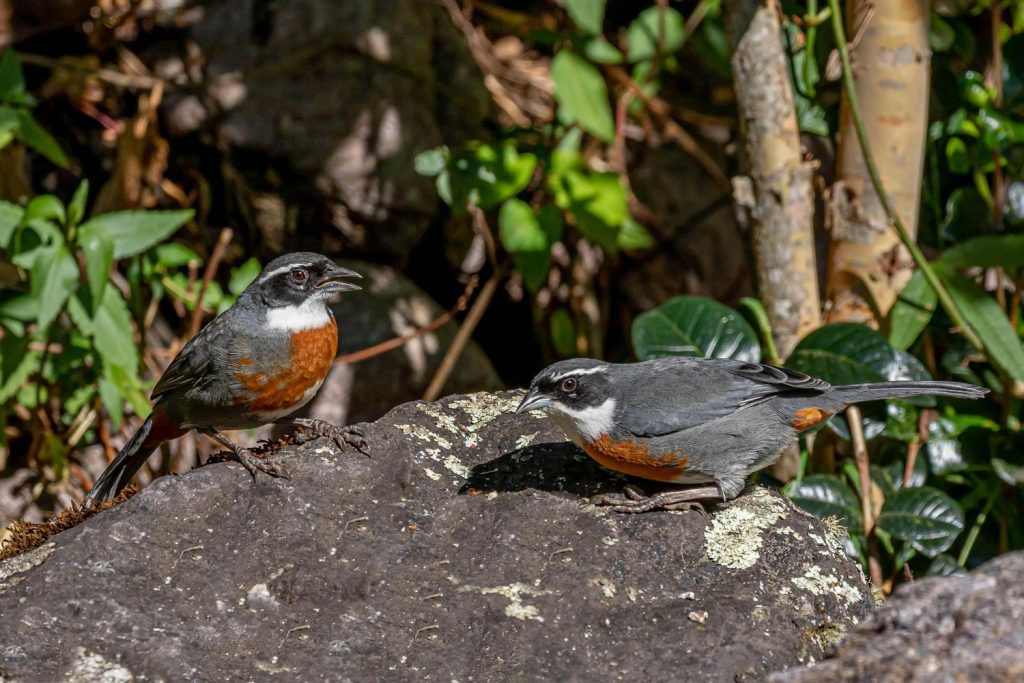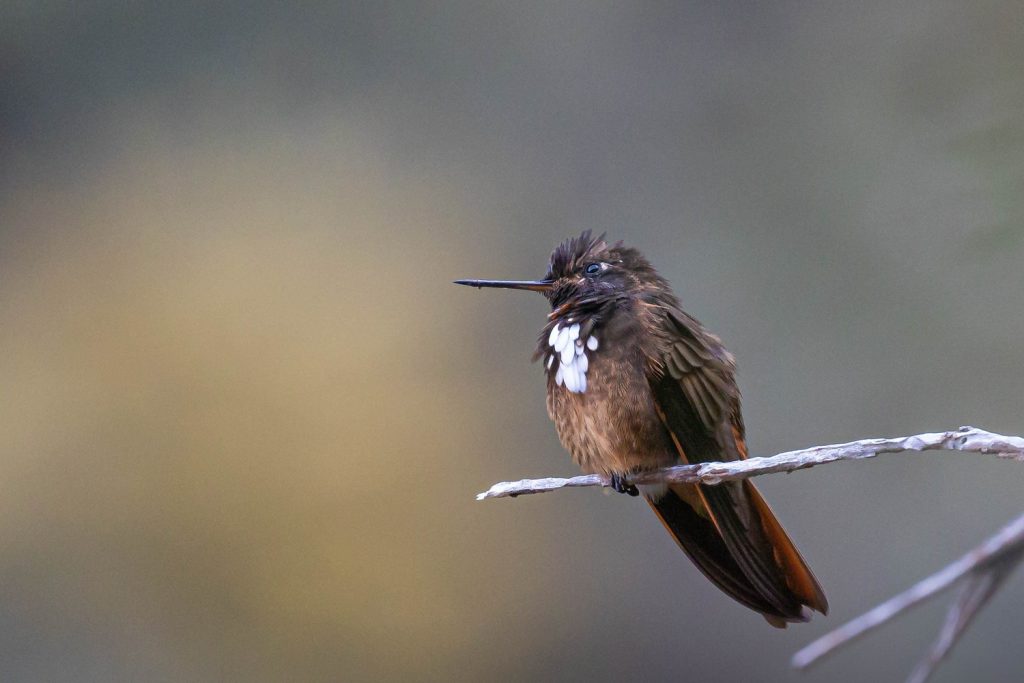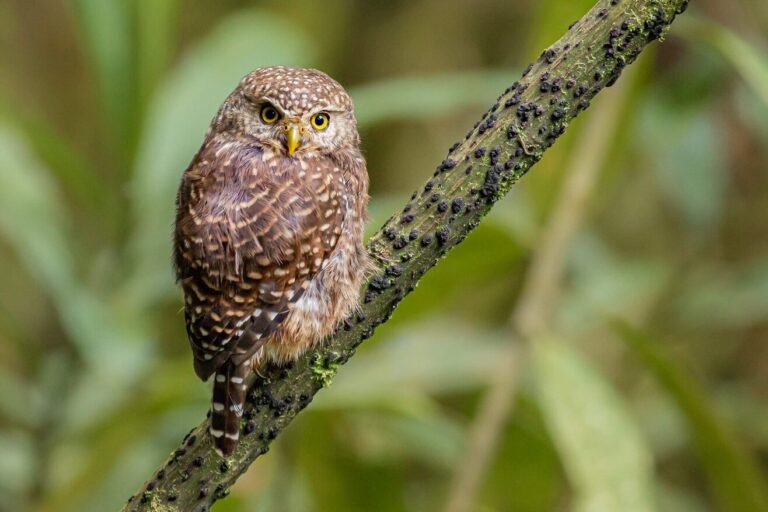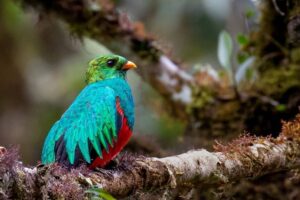The National Bird of Peru: Andean Cock of the Rock
The Cock-of-the-Rock bird is one of the most extraordinary birds in Peru, known for its brilliant orange plumage and distinctive fan-shaped crest. Often called the «national bird of Peru,» the Andean Cock-of-the-Rock bird captures attention with its vibrant colors and unusual displays, making it a favorite among birdwatchers and travelers alike. With the scientific name Rupicola peruvianus, this species thrives in the cloud forests of the Andes, contributing to the rich tapestry of national animals of Peru.

Spotting the Cock-of-the-Rock: Male Displays and Feeding Habits
One of the best ways to spot the Andean Cock-of-the-Rock is to visit a lek—a place where males gather to perform elaborate courtship displays. Here, males hop from branch to branch, bob their heads, and produce deep croaking calls to win the attention of nearby females. As part of its unique behavior, the Cock-of-the-Rock often builds its nest on rocky ledges, using mud to create a sturdy cup structure attached to cliff faces. Observers of birds in Peru will find this display both captivating and emblematic of Andean wildlife.
Outside of these lek gatherings, the Cock-of-the-Rock bird can be found feeding on fruiting trees, using the thick forest canopies as its playground. The diet of this bird includes fruits, insects, and even small vertebrates like frogs and lizards, all of which provide essential nutrients that support its colorful display and active lifestyle. Though typically sedentary, individual birds may move within their habitat in search of food.

Appearance and Identification
The National Bird of Peru is unmistakable with its bright colors and unique features. Measuring about 30–32 cm (12 inches), males sport intense orange or red feathers (depending on the subspecies), a striking contrast against the green forest canopy. Females are subtler, with chestnut-brown plumage and a smaller crest, adding to their enigmatic beauty. This national bird of Peru, habitat ranges across montane forests in the Andes, from Venezuela down to Bolivia, preferring steep, forested ravines near streams, between 500 and 2,400 meters above sea level.
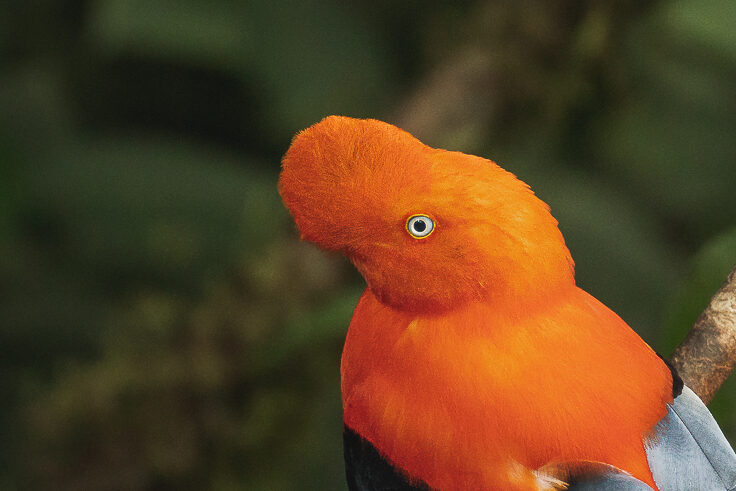
Where Can You Find Them?
The Andean Cock-of-the-Rock (Rupicola peruvianus) has a distribution range primarily along the Andes Mountains, spanning several countries in South America. Its range includes:
- Venezuela – Western parts, particularly in mountainous areas.
- Colombia – Found in the Andes, especially in regions with dense montane forests.
- Ecuador – Throughout the andean cloud forests.
- Peru – Widely distributed in the Andes, particularly from the north to the south of the country, including regions such as San Martín, Cuzco, and Amazonas.
- Bolivia – Found in the western regions, especially in the Andean foothills.
The habitat is generally montane cloud forests and ravines, often near streams at elevations ranging from 500 to 2,400 meters above sea level. This species prefers humid, densely vegetated areas, which provide abundant food and nesting sites.
Best birding tours for Andean Cock of the Rock
To see it in its natural habitat, Peru is one of the best places. This national bird of Peru is often spotted in protected areas, including the famous Machu Picchu Historical Sanctuary, the famous Manu Road, Alto Mayo among many others, the cloud forests of the Andes. In this ideal habitat, which offers ample food and cover, the Cock-of-the-Rock can safely thrive with minimal disturbance from humans. Additionally, these regions host other national animals of Peru, making them popular destinations for nature lovers worldwide.
See our tours for the Andean Cock of the Rock here:
Nothern Peru – The Classic Tour
Unique Calls and Vocal Displays
As vocal as it is visually striking, the National Bird of Peru makes a distinctive “youii” call during its lek displays, accompanied by the rhythmic “kip-kip-kip” sound that adds to its mystique. During foraging, both male and female birds may utter a louder, querulous “uankk” if disturbed—a call familiar to those who frequent birds in their hotspots.
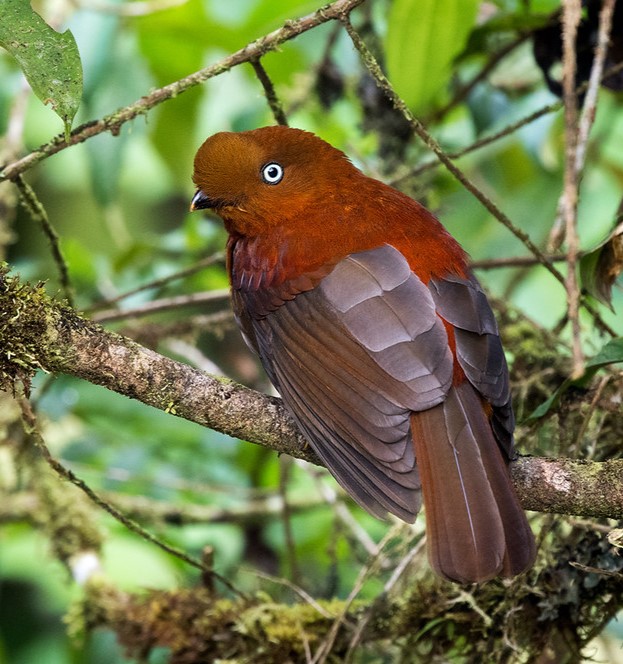
The Breeding Cycle and Lifespan
The breeding season varies by region, with nests often found in communal clusters along cliffs and steep slopes. Males display communally at leks, where the presence of females intensifies their behavior, leading to even more elaborate movements, wing flapping, and calls. The lifespan of the National Bird of Peru in the wild is estimated to be around 7-10 years, though this can vary depending on environmental factors. The nest, typically made of mud and coarse plant material, holds a clutch of two eggs that hatch after an incubation period of 28 days, with fledglings leaving the nest 42–48 days later.
See more info here.
Conservation Status: A Species of “Least Concern”
Despite facing some localized threats, the Andean Cock-of-the-Rock is currently listed as a species of Least Concern by conservation authorities. Its widespread range across the Andes and preference for secluded habitats make it less vulnerable to human disturbance. Being Peru’s national bird also helps promote its protection in ecotourism areas, where large leks like those near the Cock-of-the-Rock Lodge serve as eco-tourism attractions. For travelers interested in what is Peru’s national bird, witnessing the Cock-of-the-Rock’s display is an unforgettable experience.
With its bright colors, bold behaviors, and dramatic calls, it is not only a remarkable symbol of Peru but also a fascinating subject for anyone interested in the rich biodiversity of the Andes.





